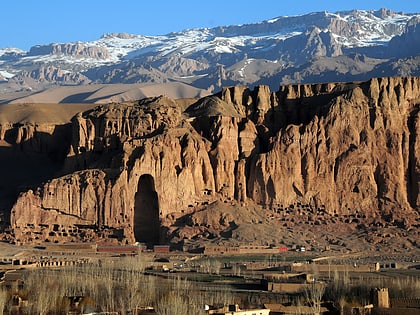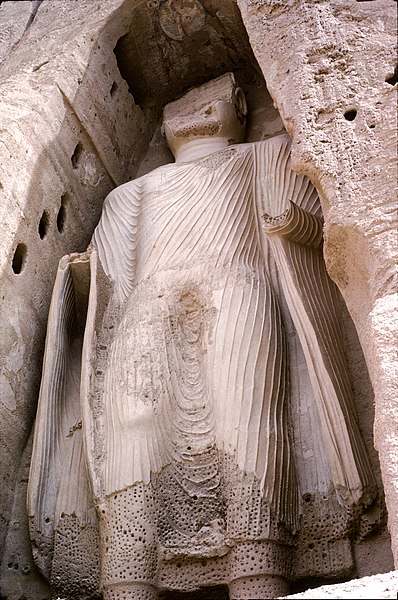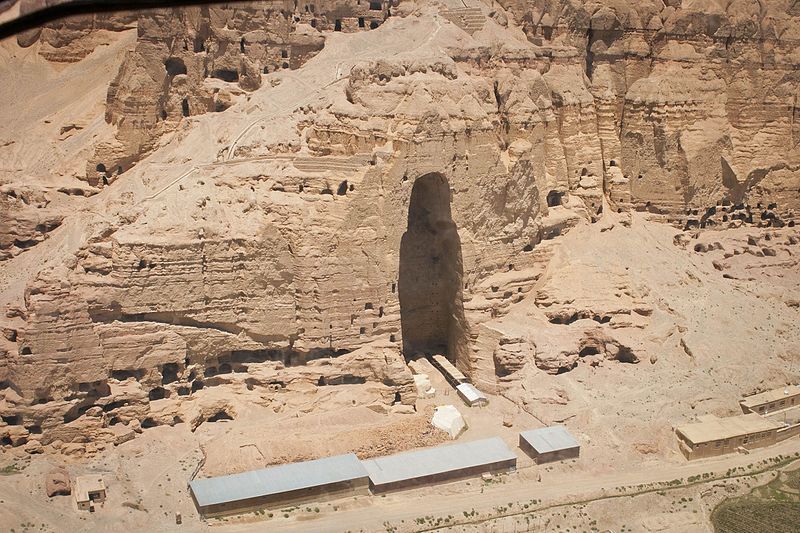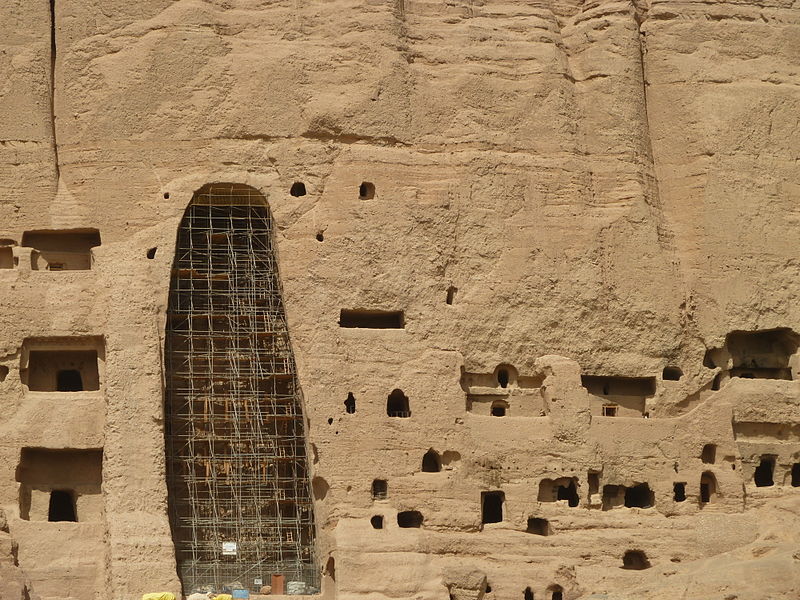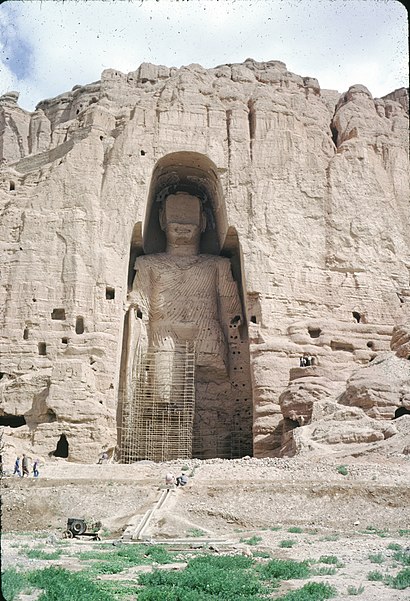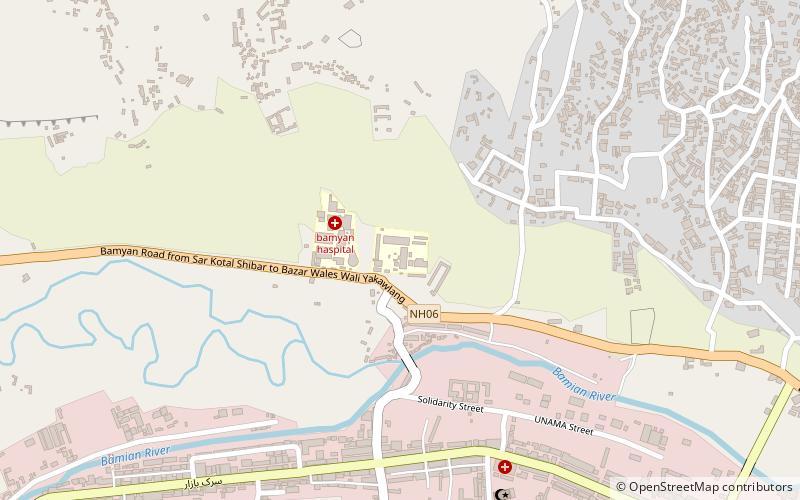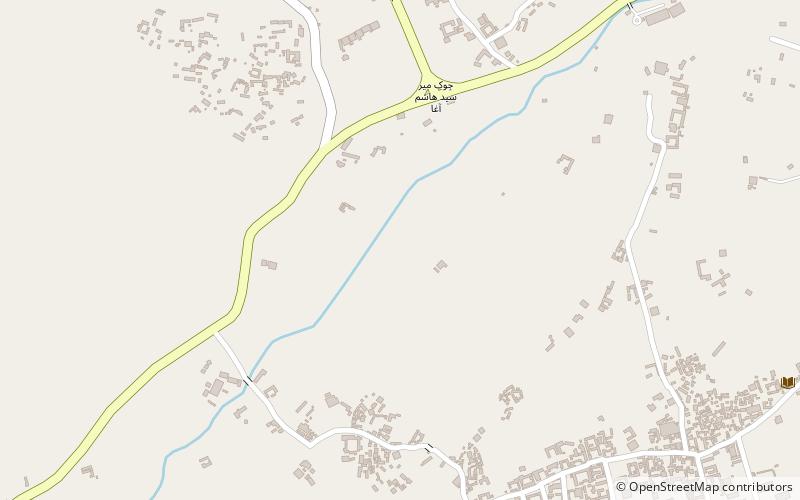Buddhas of Bamiyan, Bamiyan
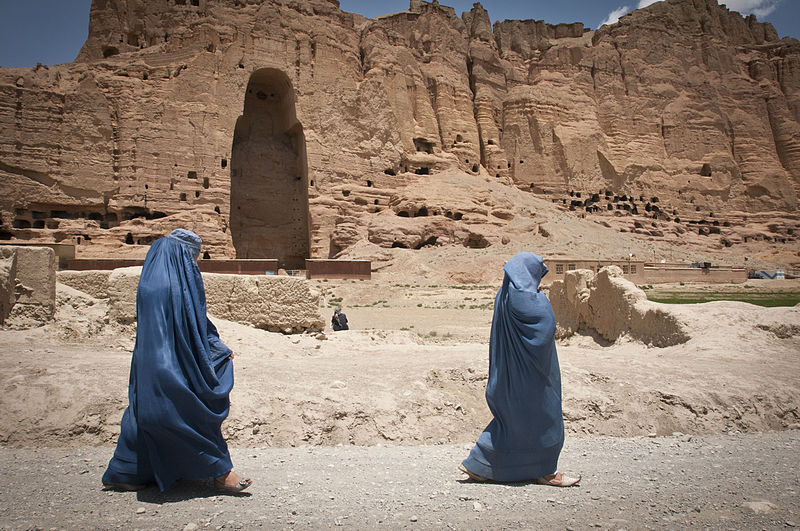
Facts and practical information
The Buddhas of Bamiyan, once standing tall in the Bamiyan Valley of central Afghanistan, were a majestic and historical testament to the region's rich cultural tapestry. These colossal statues, carved into the side of a cliff, dated back to the 6th century and represented a blend of Gandharan art with Indian Buddhist iconography, an embodiment of the cultural crossroads that was the Silk Road.
The larger of the two figures stood at an awe-inspiring 55 meters, while the smaller companion was 38 meters tall, making them some of the tallest standing Buddha figures in the world. Visitors to the site could marvel at the intricate details of the carvings, the echoes of painted frescoes, and the network of caves that surrounded the statues, which once served as monastic cells and sanctuaries for Buddhist monks.
Tragically, in 2001, these ancient icons were destroyed by the Taliban, an act that was met with international outrage and sorrow. Despite their physical absence, the site of the Buddhas of Bamiyan remains a poignant tourist attraction and a UNESCO World Heritage Site, drawing visitors who wish to pay homage to the cultural and historical significance of these lost wonders.
Tourists can explore the cultural landscape and archaeological remains, which include the niches where the Buddhas stood, as well as the remnants of Buddhist art in the caves. The Bamiyan Valley itself is a place of stunning natural beauty, offering breathtaking views of the surrounding cliffs and the fertile valley below.
Bamiyan
Buddhas of Bamiyan – popular in the area (distance from the attraction)
Nearby attractions include: Bamyan University, Bamyan District.
Frequently Asked Questions (FAQ)
When is Buddhas of Bamiyan open?
- Monday 24h
- Tuesday 24h
- Wednesday 24h
- Thursday 24h
- Friday 24h
- Saturday 24h
- Sunday 24h
